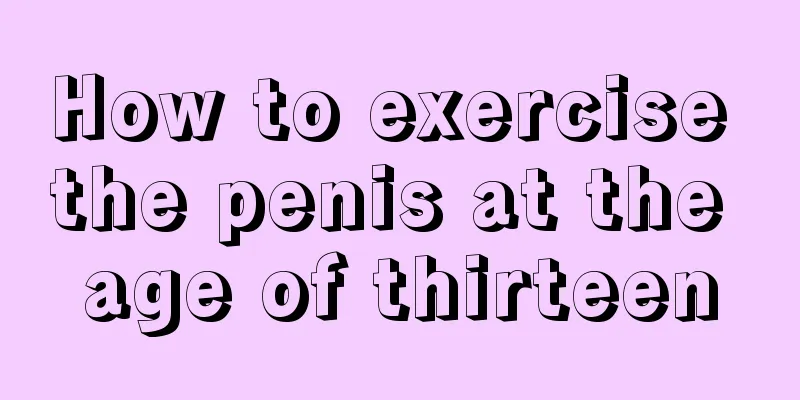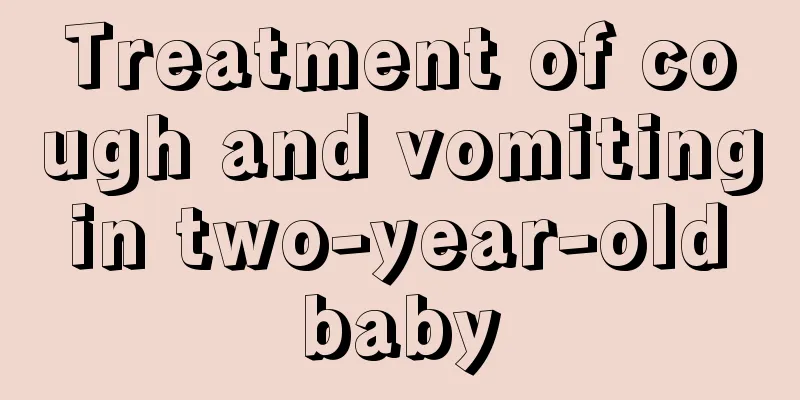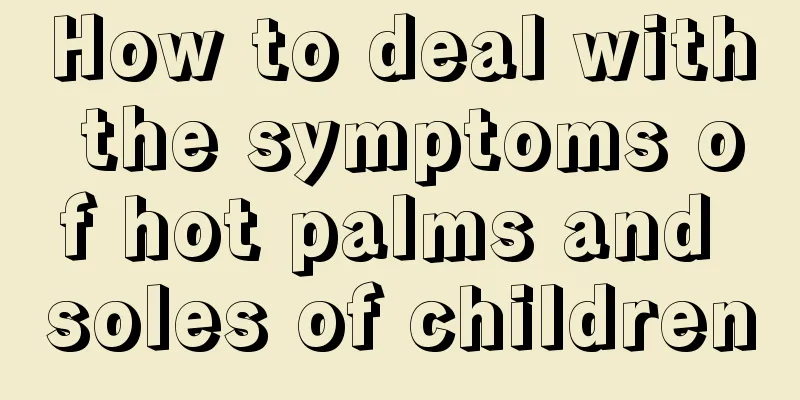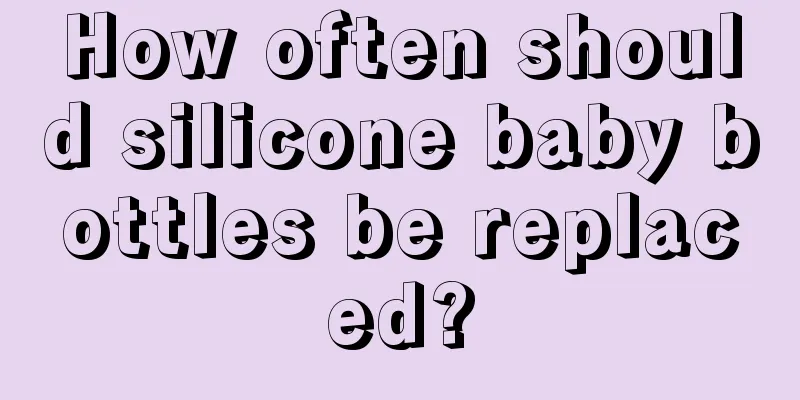What should I do if my one-year-old baby has a fever of 39 degrees?
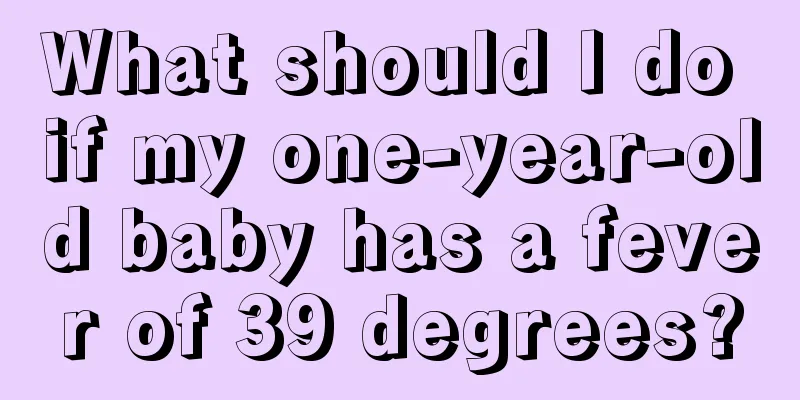
|
Fever is a disease that is very common in the human body. There are many reasons for fever, including infection with infectious viruses, catching a cold from the rain, etc. One-year-old babies are very prone to fever because their body resistance is relatively low and they cannot take good care of themselves. Fever in babies needs to be dealt with promptly. Here we will introduce what to do if a one-year-old baby has a fever of 39 degrees. Children should not rush to use medicine to reduce fever. Because fever is a defensive reaction of the human body, antipyretics can generally only lower body temperature but cannot eliminate the root cause of the fever. If the body temperature does not exceed 38.5℃, do not rush to reduce the fever, especially before a clear diagnosis is made.Guidance: Generally speaking, when a child's body temperature is lower than 38.5℃, it is best to drink more water, get more rest, pay close attention to changes in the condition, or use physical cooling methods to reduce fever. However, if the fever lasts too long or the temperature is too high (over 38.5℃), antipyretic drugs must be used for necessary treatment. Fever indicates inflammation in the body. It is recommended to check the routine blood test to see if it is a bacterial infection or a viral infection so as to prescribe the right medication. In addition, if the baby's temperature exceeds 38.5 degrees, oral antipyretics should be taken. You can choose Enrique, Motrin, Tylenol, etc. to avoid high fever convulsions caused by excessive body temperature. If the body temperature is between 37.5-38.4 degrees, physical cooling can be adopted, such as wiping with warm water or alcohol, placing a cool towel on the forehead, etc. When the fever subsides, the baby will sweat a lot. You should reduce the amount of clothes appropriately and change wet clothes frequently to prevent the baby from catching cold. Give the baby plenty of water to prevent dehydration. In addition, according to the results of routine blood tests, anti-inflammatory or antiviral drugs should be used in a timely manner. Only when the inflammation subsides can the body temperature return to normal, otherwise the fever will recur.1. Maintain air circulation in the home: If the home has air conditioning, maintain the room temperature between 25-27℃. You can place the child in an air-conditioned room or blow an electric fan around him to slowly lower his body temperature, which will make the child feel more comfortable. But if the limbs are cold and the patient is shivering violently, it means that the patient needs warmth, so he should be covered with a blanket. 2. Take off too many clothes: If the baby's limbs and hands and feet are warm and the whole body is sweating, it means that the baby needs to dissipate heat, so he can wear fewer clothes. 3. Warm water bath: Undress the baby and rub the whole body with a warm water (37℃) towel. This will dilate the blood vessels in the baby's skin and release body qi. In addition, when water vapor evaporates from the body surface, it will also absorb body heat. 4. Sleeping with an ice pillow: It helps to dissipate heat, but it is not recommended for younger children because it is difficult for young children to turn their bodies, and the ice pillow can easily cause local overcooling or hypothermia. You can also use a cooling patch. When the water in the gelatinous substance of the cooling patch evaporates, it can take away the heat and will not cause excessive cooling.5. Drink more water to help sweating and prevent dehydration. Water has the function of regulating temperature, which can lower body temperature and replenish water lost in the baby's body. 6. Use antipyretics: When the core temperature (rectal temperature or ear temperature) of an infant or young child exceeds 38.5°C, you can use antipyretic solutions or suppositories appropriately. If you have a fever, it is best to see a doctor. But sometimes it is inconvenient to reduce the fever at home first. Generally, if the body temperature is below 38, there is no need to reduce the fever. |
<<: What to do if your baby has a fever
>>: Why does my baby have a gurgling throat when he has a fever?
Recommend
What causes eye pain in children?
When children have eye pain, you should pay atten...
What are the characteristics of mentally retarded children?
Some children are healthy after birth, but becaus...
What should I do if my child does not meet the height requirement?
Now that people's lives are getting better an...
Baby's back of hand is swollen, what's going on?
Because babies are too young, sometimes they will...
What to do if your baby has a runny nose and cough
As a mother, you should know how to treat the run...
What to do if your one-year-old baby has food accumulation
A one-year-old baby can be said to be in a very i...
Improper treatment of convulsions in children can be fatal!
Nowadays, careful parents will find that many chi...
Symptoms and treatment methods of baby liver ascites
Ascites is a common liver disease that can occur ...
Is your newborn breathing heavy? It is important to understand these
It is a very normal phenomenon for newborns to ha...
Why does my child's knee hurt when he sleeps?
For a family, the child is the apple of the eye. ...
What is the cause of testicular pain in a 10-year-old child?
The testicles are an important part of the male r...
White spots on the baby's back must not be ignored
Vitiligo is a disease with a high incidence rate ...
What medicine is good for children's nosebleeds? Finding the cause is the most important
Sometimes children will have nosebleeds for no re...
What should I do if my baby’s foreskin is too long?
Some mothers wrote to us and said that their baby...
What is the method for newborn disease screening?
Newborns are a group of people who are more likel...
